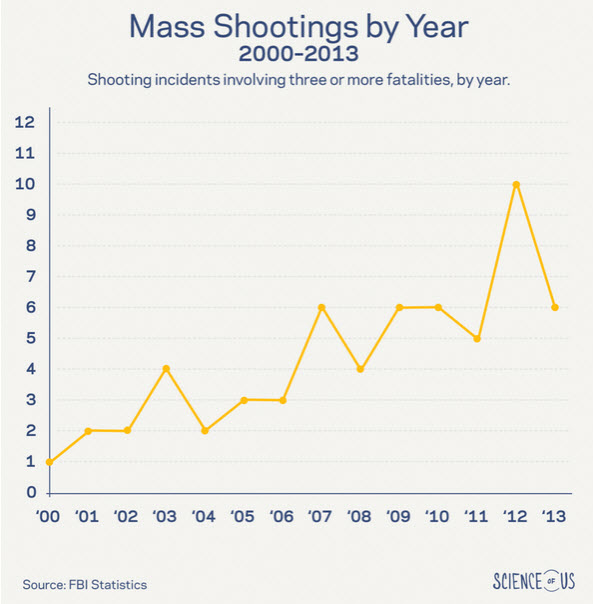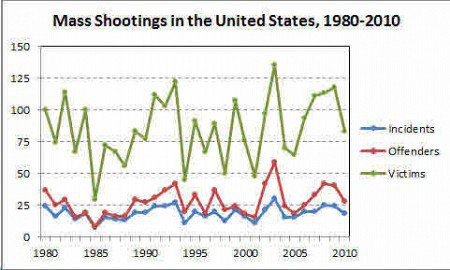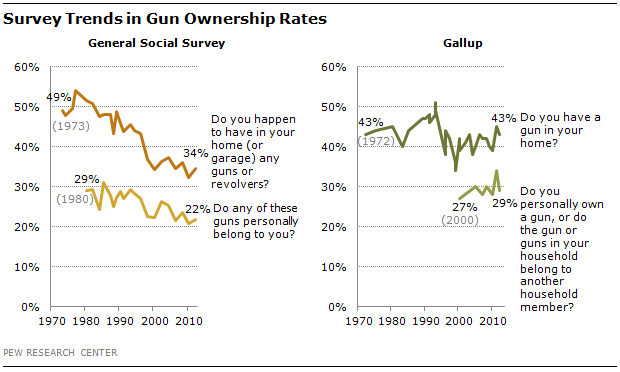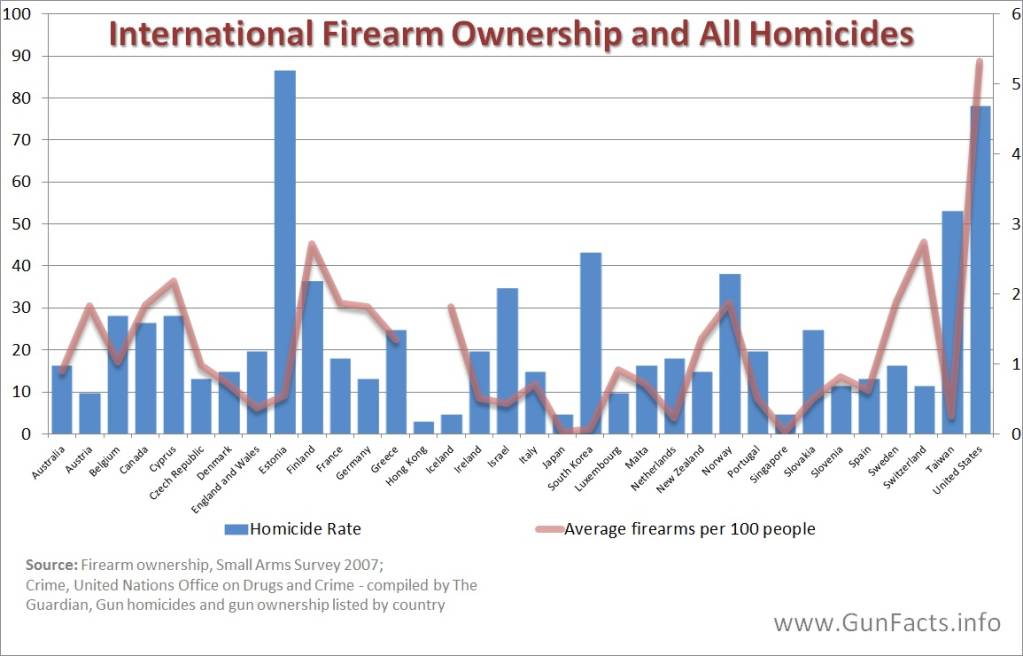5 Things Obama Didn’t Mention When He Blamed America for the Charleston Shooting
At a predominately African American church in Charleston on Wednesday night, a South Carolina man named Dylann Storm Roof entered and later opened fire on the church attendants.
The horrific mass shooting left nine people dead and the country shaken and searching for answers.
President Obama delivered a speech addressing the nation on the tragic shooting that tilted towards condemnation of the U.S.’ gun culture. At one point in the speech, he specifically blamed America for giving rise to the tragic shooting:
But let’s be clear: At some point, we as a country will have to reckon with the fact that this type of mass violence does not happen in other advanced countries. It doesn’t happen in other places with this kind of frequency.
Feeding into the public perception that gun violence and mass shootings are exploding in frequency is both the selective politicization of random events of gun violence, and media omission of basic statistics that give fuller context.
There are a number of stark facts that contradict this political narrative.
1. The Frequency of Mass Shootings in America is Rare
 If you examine the frequency of mass shootings in America, a line chart since 2000 appears quite striking. It is clearly on the uptick. But what this chart lacks is both proportion and context.
If you examine the frequency of mass shootings in America, a line chart since 2000 appears quite striking. It is clearly on the uptick. But what this chart lacks is both proportion and context.
In terms of proportion, we are talking about a nation of more than 300 million people, and numbers of mass shootings per year that people can count on two hands.
If there is a pervasive “gun culture” causing these terrible occurrences, why is it only affecting just a few people every year?
2. Mass Shootings are Not Significantly on the Rise
 A chart that comes to us via the Washington Post, based on data from criminologist James Allan Fox of Northeastern University, shows that from 1980-2010 mass shootings are not steadily increasing. There is fluctuation on the variables of incidents, offenders, and victims, but no overall clear trend. This was also reported by CNN.
A chart that comes to us via the Washington Post, based on data from criminologist James Allan Fox of Northeastern University, shows that from 1980-2010 mass shootings are not steadily increasing. There is fluctuation on the variables of incidents, offenders, and victims, but no overall clear trend. This was also reported by CNN.
Contrast this with widely disseminated data from Mother Jones, mentioned more recently by the Washington Post and even picked up by a Harvard study, that purports that mass shootings have “tripled” in frequency.
The chart from Dr. Fox has broader criteria than Mother Jones does: while Fox’s data include all mass shootings (four or more killed), whether or not it is carried out by gangs, or takes place in public or in private homes (domestic violence included), the data from Harvard show just public mass shootings where the victims and the shooter(s) do not know one another.
This is cherry-picking, because we are talking about fewer than a dozen annual events (often single digits), and it is not telling the broader story about shooting violence in America.
3. Gun Violence is Down. Way, Way Down.
While numerous outlets, like the Washington Post, report that firearms ownership in households is down, this is largely based on self-reporting from the General Social Survey. Striking is how much the GSS polling conflicts with Gallup polling, which shows the percentage of guns in American homes to be virtually unchanged after 30 years:
 Adding to the lack of clarity, Gallup reported in 2011 that the number of firearms in each household was the highest since 1993.
Adding to the lack of clarity, Gallup reported in 2011 that the number of firearms in each household was the highest since 1993.
Whether or not the number of households with firearms has gone up, down, or remained even, the overall picture for gun violence in America (the bottom line in terms of statistical danger guns pose to citizens) is way down.
 Firearms violence was down 49% since 1993, according to Pew Research. Nevertheless, the public perception of the prevalence of gun violence has been unfazed: more people believe that gun violence has actually gone up (45%) than believe it has come down (10%). Only one in ten people know the fact: gun violence has actually gone down dramatically.
Firearms violence was down 49% since 1993, according to Pew Research. Nevertheless, the public perception of the prevalence of gun violence has been unfazed: more people believe that gun violence has actually gone up (45%) than believe it has come down (10%). Only one in ten people know the fact: gun violence has actually gone down dramatically.
Further distorting matters are such statistical issues as suicides carried out with firearms being counted as “gun violence.” While it’s true that guns are being used in these suicidal acts, it is difficult to say that alternative methods might not be used in the absence of a gun. Japan, for example, has a very high suicide rate, but very few guns.
In 2013, for example, Pew Research published an article, “Suicides account for most gun deaths.” In 2010, 6.3 of the 10.3 firearms deaths per 100,000 people could be accounted for by suicides – approximately 60%.
4. Gun Violence is Not the Only Kind of “Mass Violence”
President Obama made the claim that this kind of “mass violence” just doesn’t happen in other “advanced” countries. But “mass violence” doesn’t just include public mass shootings.
As was pointed out in an article co-authored by Dr. James Alan Fox and Jack Levin, some of the most horrific acts of violence were carried out with fire or explosives, not firearms:
With the attention on mass shootings largely driven by the debate over gun control, it is important not to lose sight of the many incidents—nearly one-third of the mass murders reflected in the Supplementary Homicide Reports (SHR)—that involve weapons other than firearms. In fact, some of the largest incidents have been perpetrated by fire or explosives (e.g., the 1995 Oklahoma City bombing).
Indeed, acts of mass violence are often carried out by fires or explosives: The Happy Land Fire of 1990 (killed 87 people), the Bath School Disaster of 1927 (killed 45 people), the Oklahoma City bombing of 1995 (killed 168 people), and the 9/11 attacks (the largest terrorist act in U.S. history, with 2,977 victims, was carried out with airliners) are all acts of “mass violence.”
5. U.S. Homicide Rate Does Not Reflect Its High Gun Ownership in Global Context
As was reported by the BBC, one finds that the U.S. has an extremely high gun ownership among developed nations (and the highest firearms ownership rate in the world at 88 guns per 100 people), but not a proportionally high gun homicide rate:
 If you examine the relationship of gun violence and firearms ownership, you will find that the relationship is not always linear.
If you examine the relationship of gun violence and firearms ownership, you will find that the relationship is not always linear.
 Estonia, for example, has an extremely high gun homicide rate (even higher than the U.S.), despite owning a fraction of the firearms per 100 people. South Korea is also unusually high, despite an even more negligible firearms ownership rate.
Estonia, for example, has an extremely high gun homicide rate (even higher than the U.S.), despite owning a fraction of the firearms per 100 people. South Korea is also unusually high, despite an even more negligible firearms ownership rate.
In addition, a timeline published in 2012 at the New York Daily News summarized the worst mass shootings in the world over the previous two decades and it showed that such incidents have occurred all over the world, including in: Norway, Britain, South Korea, France, New Zealand, Australia, and other nations that have a fraction of the U.S.’ population of over 300 million people.
Then there is the matter of what constitutes “mass violence” or an “advanced” nation. Does the term “advanced” exclude nations in the Middle East? Africa? Most of Asia?
Terrorist attacks, by their very nature, are acts of “mass violence.” Even if we exclude the afore-mentioned regions of the world for not being “advanced,” terrorist attacks have occurred in Britain (the London Bombings of 2005, which killed 52 people and injured over 700), Spain (the 2004 Madrid Bombings, which killed 191), and France (2015 Paris Terror Attacks, which killed 16 people) – in addition to such deadly incidents in many other such nations.
Instead of attempting to blame all of American culture for the depraved violent acts of lone individuals, and then argue to form policy based on these rare, albeit sensational events, let’s take a look at the bigger picture. Because when you do, one finds that blaming guns for the rare, violent acts of disturbed individuals like Dylann Storm Roof makes little sense.

of Gallium in 1875, and the good agreement of the predictions with the actual properties demonstrated to learn anything. The team colors are Gold, navy, white. v Summary: Martin has been a who signed autographs at the gas station and believed without a doubt that he would play